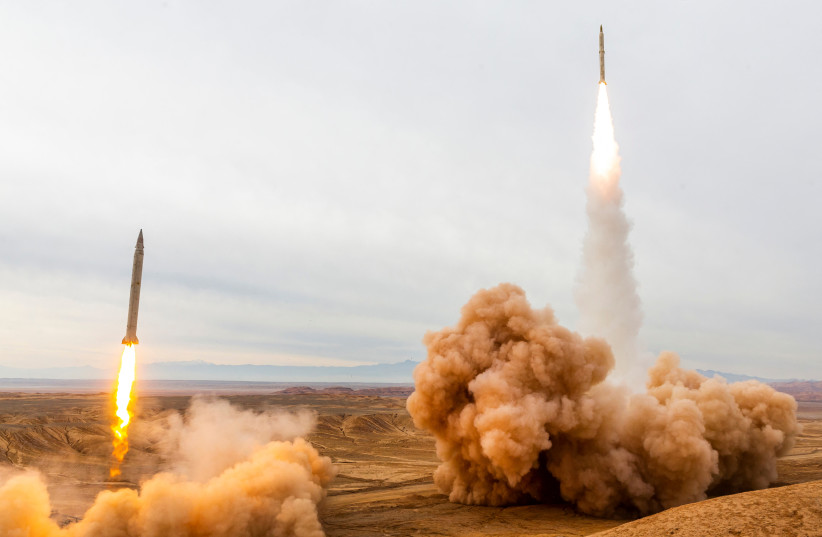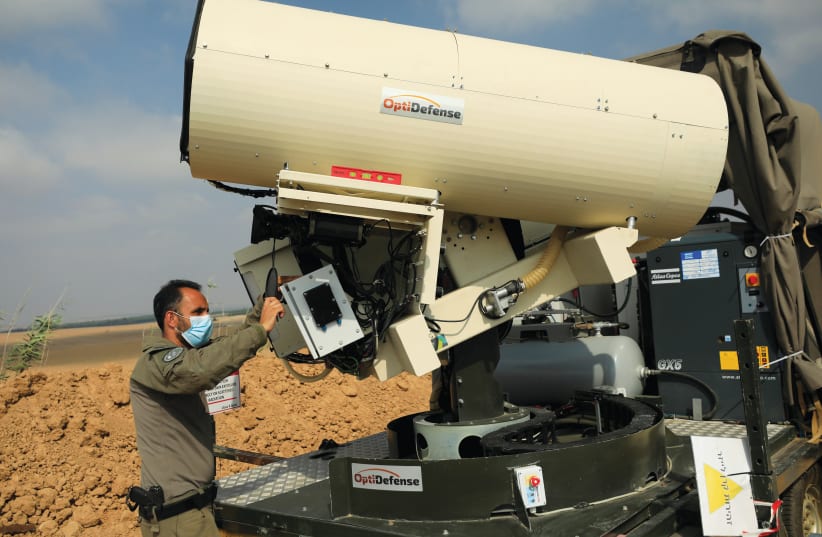With Israel facing the growing threat posed by enemy rocket salvos as well as Iranian missiles, the Jewish state’s laser missile-defense system is the talk of the town.
On Tuesday, Prime Minister Naftali Bennett said the system would be deployed “within a year,” first experimentally and then operationally in the South.
“And this will enable us, as the years advance, to surround Israel with a wall of lasers that will protect us from missiles, rockets, UAVs and other threats,” he said at a conference put on by Tel Aviv University’s Institute for National Security Studies.
Defense officials have said recently that the system would not be operational for the next few years, but Bennett has apparently sped up the timeline.
Israel considers Iran’s nuclear program its No. 1 concern. Though Tehran has consistently denied seeking to build a nuclear bomb, tensions have risen as the West has resumed talks in Vienna on reviving the JCPOA nuclear deal to curb the country’s nuclear program.


The Islamic Republic is also continuing to develop the capabilities to produce ballistic missiles capable of carrying nuclear warheads that would take less than 15 minutes to reach Israel.
Iran has several rockets that can reach Israeli territory, including the Khoramshahr 2 with a range of up to 2,000 km. (1,243 miles) and the Shahab-3.
The IDF has admitted that Iran’s conventional missile threat is a major worry for Israel, which despite its multi-layered air defenses may not be able to contend with intensive missile barrages fired by Iran and its proxy groups like Hezbollah in Lebanon or Shi’ite militias in Iraq.
Terrorist groups in the Gaza Strip such as Hamas and Palestinian Islamic Jihad have already tested the Iron Dome’s ability to deal with a heavy barrage, including during the war in May that saw more than 4,000 rockets, missiles and mortars fired toward Israel by the groups.
Following Operation Guardian of the Walls, IDF officials urged defense manufacturers to speed up their work on the systems, and to have at least one of them operational by the middle of next year.
According to Haaretz, three additional systems are scheduled to be delivered by 2024.
All four are to be first deployed in southern Israel.
Israel’s comprehensive protective umbrella that counters the growing missile threats include the Iron Dome, designed to shoot down short-range rockets; the Arrow (Arrow-2 and Arrow-3) system, which intercepts ballistic missiles outside of the Earth’s atmosphere; and David’s Sling missile-defense system, which is designed to intercept tactical ballistic missiles and medium- to long-range rockets, as well as cruise missiles fired from a range of 40-300 km. (25-186 miles).
These systems are expensive, however, with interceptor missiles costing tens of thousands of dollars to millions of dollars each – to defend against rockets fired from the Gaza Strip that are a fraction of the cost.
The laser system, meanwhile, costs just a few dollars per pulse.
THE DEFENSE Ministry’s Directorate of Research and Development (DDR&D, or MAFAT in Hebrew) has been working on two laser-based systems.
“From the moment a laser is on the target[s], it takes a few seconds before they are downed,” MAFAT head Brig.-Gen. (res.) Dr. Danny Gold told The Jerusalem Post in a recent interview, and that such a system would be used alongside the Iron Dome.
But it will be another few years before a prototype will be operational, Gold said, and he hopes in another decade, MAFAT will have a system that can down long-range targets.
One of the systems being developed with Rafael Advanced Defense Systems is in the advanced stages of research and development. It is a ground-based high-powered laser that will be integrated with the Iron Dome. In parallel, MAFAT is also working on an airborne-based high-powered laser with Elbit.
The Defense Ministry has already carried out a successful series of interceptions using the airborne laser system installed on a civilian plane, downing several drones.
During the June trials, the high-powered laser system that had been installed on a civilian Cessna aircraft destroyed several unmanned aerial vehicles at different ranges and altitudes. According to the ministry, Israel is among the first countries in the world to succeed in integrating laser technology onto an airplane and intercept targets in an operational scenario.
The trials were the first phase of a multi-year pilot program of MAFAT and Elbit Systems to develop an aerial laser system to deal with a number of threats facing Israel, including long-range rocket fire.
The method of airborne interception using a powerful laser has many advantages, including a low cost per interception, the ability to effectively intercept long-range threats at high altitudes regardless of weather conditions, and the ability to defend vast areas.
In an interview with Globes, IDF General Staff Planning Division head Brig.-Gen. Eyal Harel said the system is already at a very advanced stage, with final tests set to take place early this year.
“We succeeded in getting somewhere no one else in the world has managed to reach,” he said. “As soon as the final trial succeeds, we’ll enter into serial production of the laser systems, which within two years will put us in a different operating point, certainly relative to the Gaza Strip.
“The next stage will be miniaturization, reducing production costs for the ground systems, and also making it airborne,” Harel said. “That’s where the big defense companies are involved. Laser is the next thing – it really is Star Wars.”
